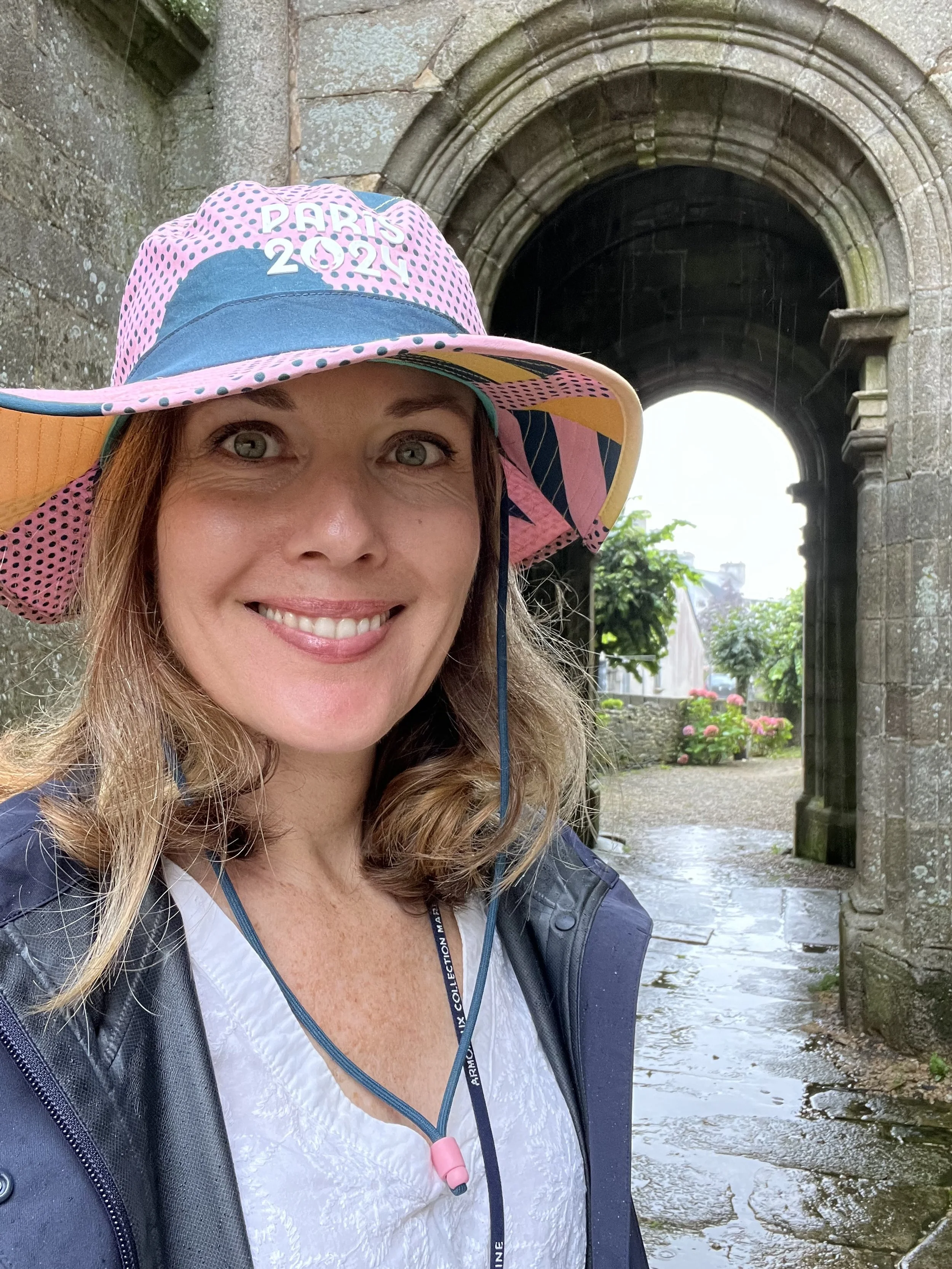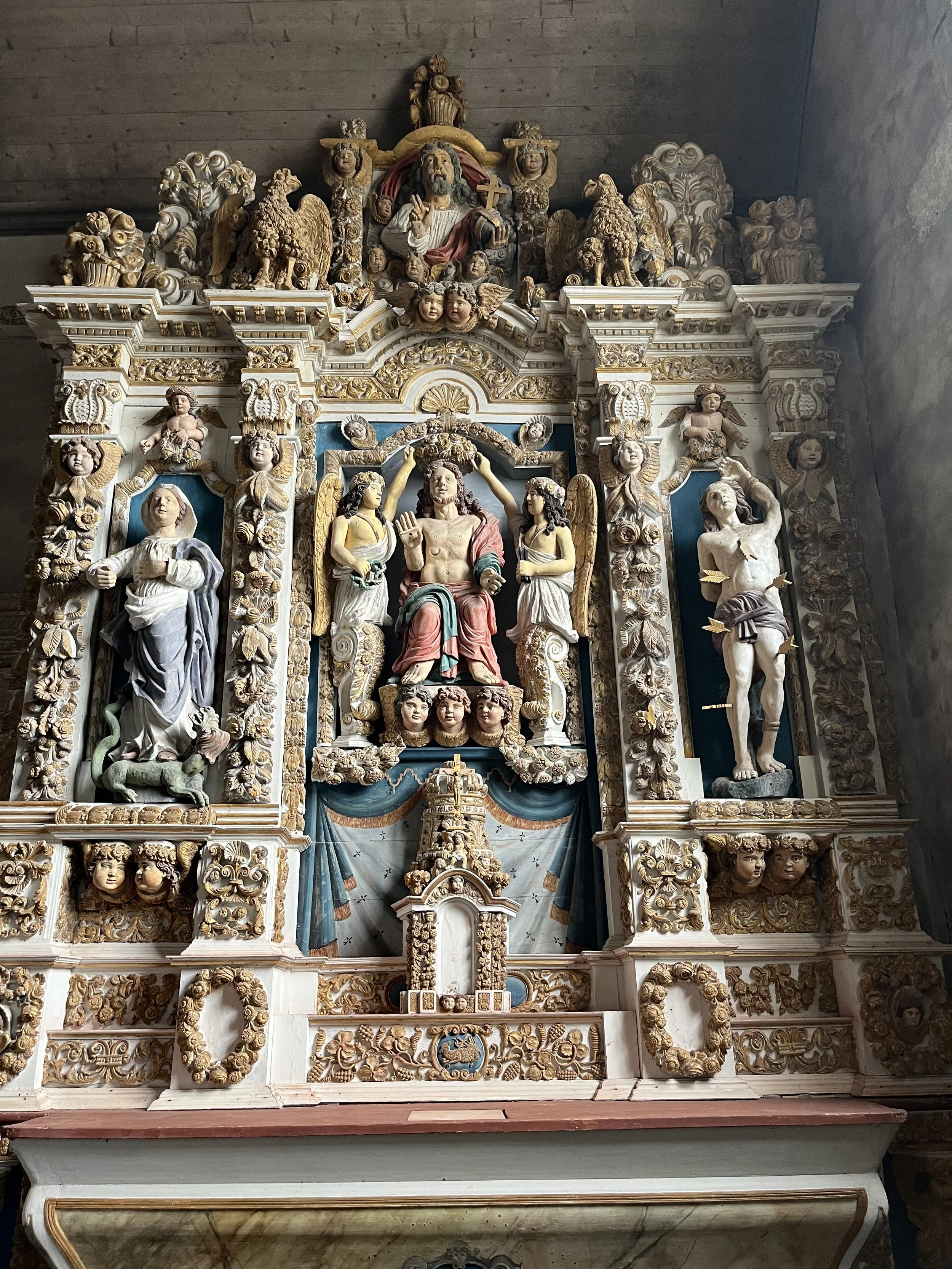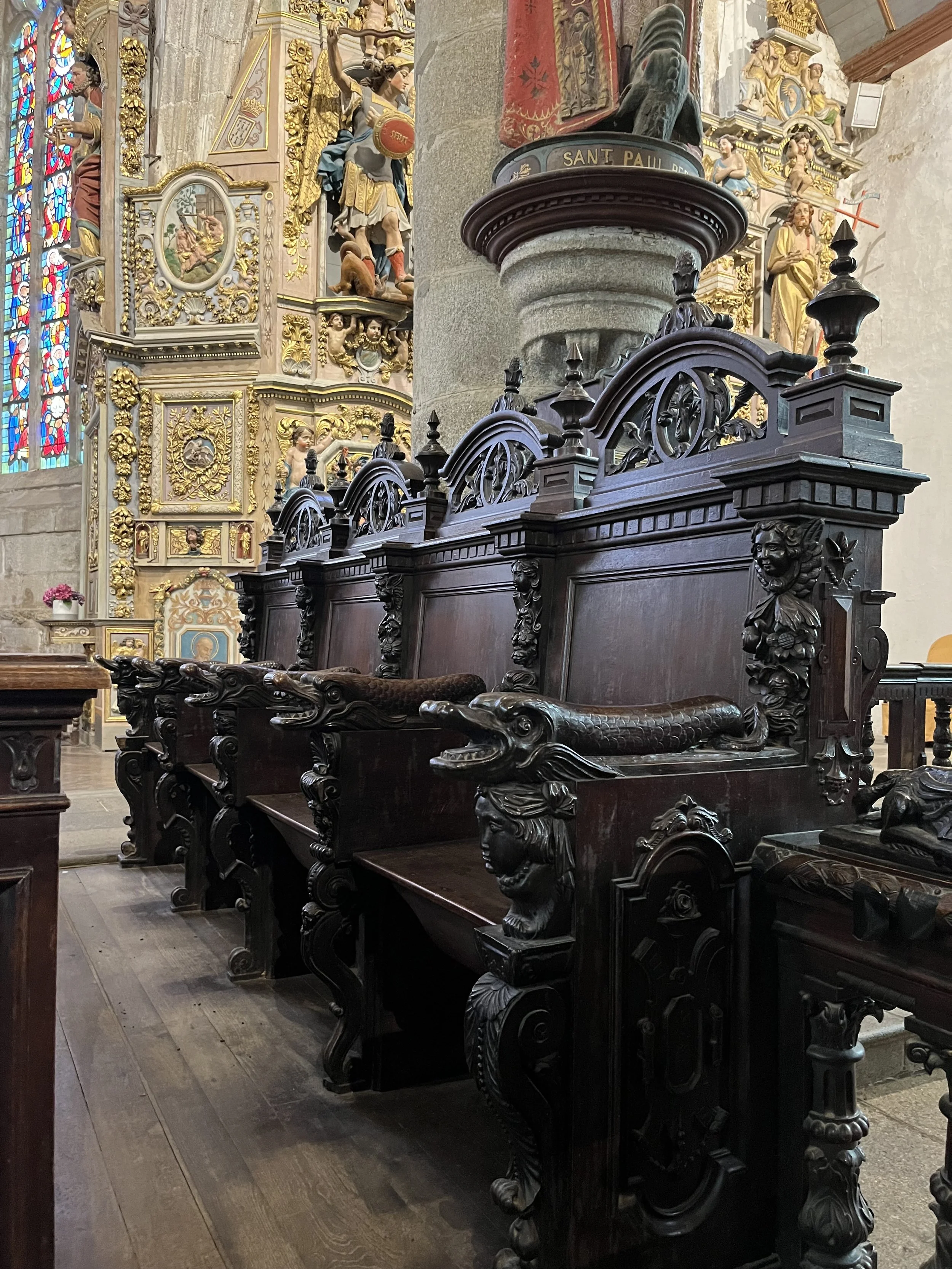Breton Parish Closes: Sacred Art & Architecture
As a licensed tour guide (Guide Conferencier) in Paris, I am always seeking the stories behind the stones—the details that show how people once lived, what they believed, and how they expressed it. But in Brittany, that search is personal. My husband is from Finistère, in the far west of France, and his mother was one of fourteen children. The result is a big extended family, many of whom still live in small villages scattered across the region. When we gather for family reunions — often with a traditional mischoui (a pig roast) — we always take time to visit the nearby enclos paroissiaux, the enclosed parish churchyards that are so unique to this part of France.
Most were built in the 1500s and 1600s, a period when this region was experiencing remarkable growth. Finistère became prosperous by supplying hemp and linen for ships at a time when European ports were busy with trade and war. That wealth, and a little friendly competition between parishes, led villages to build not only churches, but entire walled complexes—a church, a calvary, an ossuary, and often a ceremonial archway—each one trying to be more impressive than the next. These weren’t just for weekly mass. They were built to host the big religious festivals called pardons, when the whole region would come together.
We visited on a rainy day, and my bob hat was perfect. I was a volunteer for the Paris 2024 Olympics and was proud to wear this hat every day while working at the golf course.
Walking through the gate of one of these enclos feels like stepping into another world. The first thing you usually see is the calvary—a large stone sculpture of the crucifixion. But it’s not just Jesus and the two thieves. The base is often full of carved scenes from the Passion, with figures that are full of personality, sometimes even humor. I’ve stood in front of many with my husband’s family, noticing new details each time—a Roman soldier, a grieving Mary, a devil in the corner.
Nearby you’ll often find the ossuary, a small building once used to store bones when the cemetery got full. But these aren’t plain or morbid—many are carved with scenes of Christ’s burial or the Last Judgment. They’re a reminder of how death was once a part of everyday life, but also of the care and time people gave to honor it.
Inside the churches, the real surprise is how elaborate they are. From the outside, they may look like typical stone churches, but step in and you’re surrounded by color and movement. Huge wooden altarpieces—called retables—are covered in carved figures and painted scenes, often showing the life of a saint or the Passion of Christ. The pulpits and baptismal fonts are just as detailed, full of birds, vines, and symbolic imagery. It’s clear these weren’t just places to worship. They were built to inspire—and to show what the community could do when it came together.
Over the years, I’ve come to see these parish closes not only as beautiful heritage sites, but as places still very much alive. In their own way, they continue to tell stories about faith, community, and memory. The two centuries of general economic prosperity that gave rise to them—marked by an opening of Breton trade to Europe and a traditional, familiar piety—created a form of parish art that was shaped as much by the spirit of the place as by the spirit of the times. Fashions were adopted and adapted; what was loved was preserved, and even in the full swing of the 18th century, the Gothic curve was still being added to the baroque ripple. Thus, this Brittany, so wrongly believed to be remote, sailed at the heart of Europe—remaining all the more true to itself as it opened to the world.
But at the end of the 17th century, on top of an economic crisis caused by Louis XIV’s policies, came a Royal Council edict (April 1695) forbidding any new construction of buildings or alterations to existing religious structures without recognized necessity. As someone who guides at Versailles all the time, I can't help but wonder if this was a conscious effort by the Sun King to centralize not only political power but also the flow of wealth, ensuring that every franc went to the glory of the king—and his magnificent palace—rather than to the local piety of a distant province. The 18th century saw the close of this quest for the infinite written in stone, glass, and wood. These places became part of how I understand this region and how I’ve come to feel at home here.
Follow along as I take you to visit some of my favorite enclos paroissiaux—each one with its own character, its own stories, and its own place in the Breton landscape.
We’ll visit:
Locmélar
Sizun
Commana
Lampaul-Guimiliau
Guimiliau








